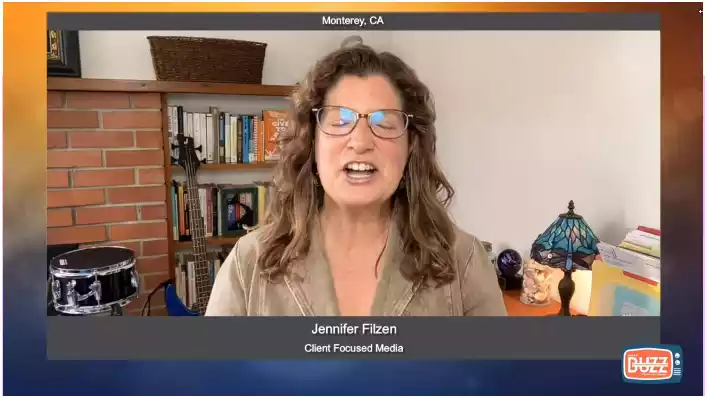The Influence of Digital Prior Authorization on Patient Results
Uncover the transformative impact of digital prior authorization on healthcare. Learn how it streamlines approvals, cuts down wait times, and boosts patient outcomes. Dive into the future of efficient healthcare management.

Imagine no more waiting in long queues and support agents free from monotonous inquiries. What is prior authorization in pharmacy? It’s a process requiring approval from a healthcare provider before a patient can receive specific medications. This streamlines patient care and administrative tasks. Healthcare providers benefit from these efficient systems.
Let’s start!
Table of Contents
The Influence of Digital Prior Authorization on Patient Results

What Does Electronic Prior Authorization Involve?
Electronic prior authorization (ePA) serves as a solution designed to streamline the PA process by replacing methods like phone calls, faxes, and paper forms with an automated online system. This system integrates with health records (EHRs) and pharmacy management systems to facilitate instant communication between healthcare providers and payers.
Key Aspects of ePA:
- EHR Integration: ePA systems can integrate with existing EHR platforms, enabling healthcare providers to initiate and manage authorizations within the interface used for patient care.
- Accurate Time Processing: Unlike other approaches, ePA offers real-time processing, cutting down waiting time from days or weeks to minutes or hours.
- Automated Decision Support: ePA systems commonly feature decision support tools that aid healthcare providers in determining the necessity of authorization and guiding them through the submission steps.
- Transparency and Tracking: ePA solutions grant visibility into the status of authorization requests, empowering providers to monitor progress and follow up when needed.
Distinguishing Features of ePA Versus Traditional Methods
Authorization methods are laborious and prone to errors. They entail data entry and frequent check-ins and often lead to delays. These inefficiencies can cause treatment delays, heightened administrative workload, and increased expenses. On the other hand, ePA streamlines much of the process, diminishing the reliance on tasks. This automation helps reduce errors, speeds up decision-making processes, and enables healthcare providers to devote attention to care rather than administrative duties.
The Impact of ePA on Patient Outcomes
- Decreased Treatment Waiting Times
A key advantage of ePA is the decrease in treatment waiting periods. Traditional prior authorization procedures may stretch over days or weeks, during which patients could experience worsening symptoms or disease progression. ePAs’ ability to process information in real-time allows for the approval of treatments and medications, enabling the initiation of patient care. - Enhancing Medication Adherence
Ensuring patients stick to their medications is crucial for achieving health outcomes. Delays in the authorization (PA) process can result in patients discontinuing their treatments. By speeding up the authorization process, ePA ensures that patients promptly receive their medications, boosting adherence rates and overall health improvements. - Boosting Provider Efficiency
Healthcare professionals often dedicate time to managing authorizations, which takes away from direct patient care. With ePA reducing this load, providers can devote attention and resources to patient interactions. This improved efficiency fosters stronger patient-provider relationships and enhances the quality of care delivered. - Savings on Costs
Authorization methods can lead to higher healthcare expenses due to administrative costs and delays in care delivery. EPA has the potential to significantly lower these costs by streamlining processes and minimizing delays. Furthermore, by ensuring access to treatments, ePA can help prevent complications that may require costly interventions later on. - Improved Data Accuracy and Compliance
Manual prior authorization processes are susceptible to errors resulting in denials and prolonged wait times. EPA systems automate data input and offer decision support tools leading to submissions, with fewer inaccuracies. Improving accuracy speeds up the approval process. Helps meet payer requirements, reducing the chances of denials. - Enhanced Patient Contentment
The primary aim of healthcare enhancements is to boost satisfaction. By minimizing delays, enhancing medication adherence, and ensuring treatments, electronic Prior Authorization (ePA) directly contributes to increased levels of contentment. Patients are more likely to stick to their medications and interact with their healthcare providers when they encounter fewer obstacles to receiving care.
I'm very thankful for Portiva who I know is looking after my practice while I'm gone the virtual assistants can manage prescription refills, documents they can triage patients and just kind of answer administrative questions and they can handle a lot on their own. But also, they're very good about contacting me if there's any emergency or anything I need to attend to. So I'm very thankful for Portiva they can help almost any provider almost anywhere and it really allows for some good work-life balance as I'm getting to experience right now at my family farm so I'm very thankful for Portiva and I'm very happy to use their services"

Board Certified Family Medicine Physician

Portiva's Virtual Medical Assistant - I have all the support I need. There's somebody checking my email, any patient messages. Patients are still able to schedule and handle any scheduling issues and any kind of billing that needs to still go through. Portiva hands handles it all for me. I have support i have somebody that I can access 24/7 pretty much. It's all very seamless. If somebody has an emergency or needs a medication called in. I know that the va's at portiva will handle that for me.

Board Certified Family Medicine Physician

Real-Life Instances Showing ePAs Impact

Factors to Consider
Despite its multitude of advantages, implementing ePA poses challenges. Healthcare institutions must invest in technology and ensure smooth integration with existing systems. Training programs and change management are vital for healthcare providers and staff members to utilize the system effectively. Moreover, variations in payer acceptance of ePA can influence its efficacy.
In summary
Electronic prior authorization (ePA) is a step in healthcare administration that has the potential to improve patient outcomes. By reducing treatment delays, enhancing medication adherence, increasing provider efficiency, and cutting costs, ePA addresses challenges associated with authorization methods. As healthcare progresses, the adoption of ePA will help ensure patients receive adequate care. Investing in ePA is a decision for healthcare providers and organizations aiming to enhance outcomes and streamline administrative processes. In an era of increasing digitization and automation within the industry, ePA emerges as a tool for delivering healthcare. For information on how electronic prior authorization can benefit your practice or organization, we encourage you to explore our resources and subscribe for updates. Together, we can strive towards a future where healthcare is more efficient, effective, and patient-focused.
To learn more about prior authorization that can enhance your medical practice. Discover more about Portiva and unlock a world of possibilities by visiting our homepage today!
- Influence of digital prior authorization
- Prior authorization enhances healthcare delivery
- Improving patient care by managing authorization denials
- Prior authorization skills
- Decoding prior authorization in healthcare law
- Prior authorization policies: how healthcare providers can adapt
- Prior authorization support for healthcare providers
- Mastering best practices for prior authorization
- Effects of prior authorization on healthcare delivery and patient outcomes
- Prior authorization for healthcare consumers
- The patient’s guide to prior authorization processes
- True impact of prior authorization on patients
- Accessing health services timely with the prior authorization process
- Maintaining data security in the time of prior authorization
- Exploring prior authorization services
- Handling insurance to expedite precertification
- Preventing burnout with precertification by portiva
- Launching new services with optimized prior authorization
- Prior authorization workflows


